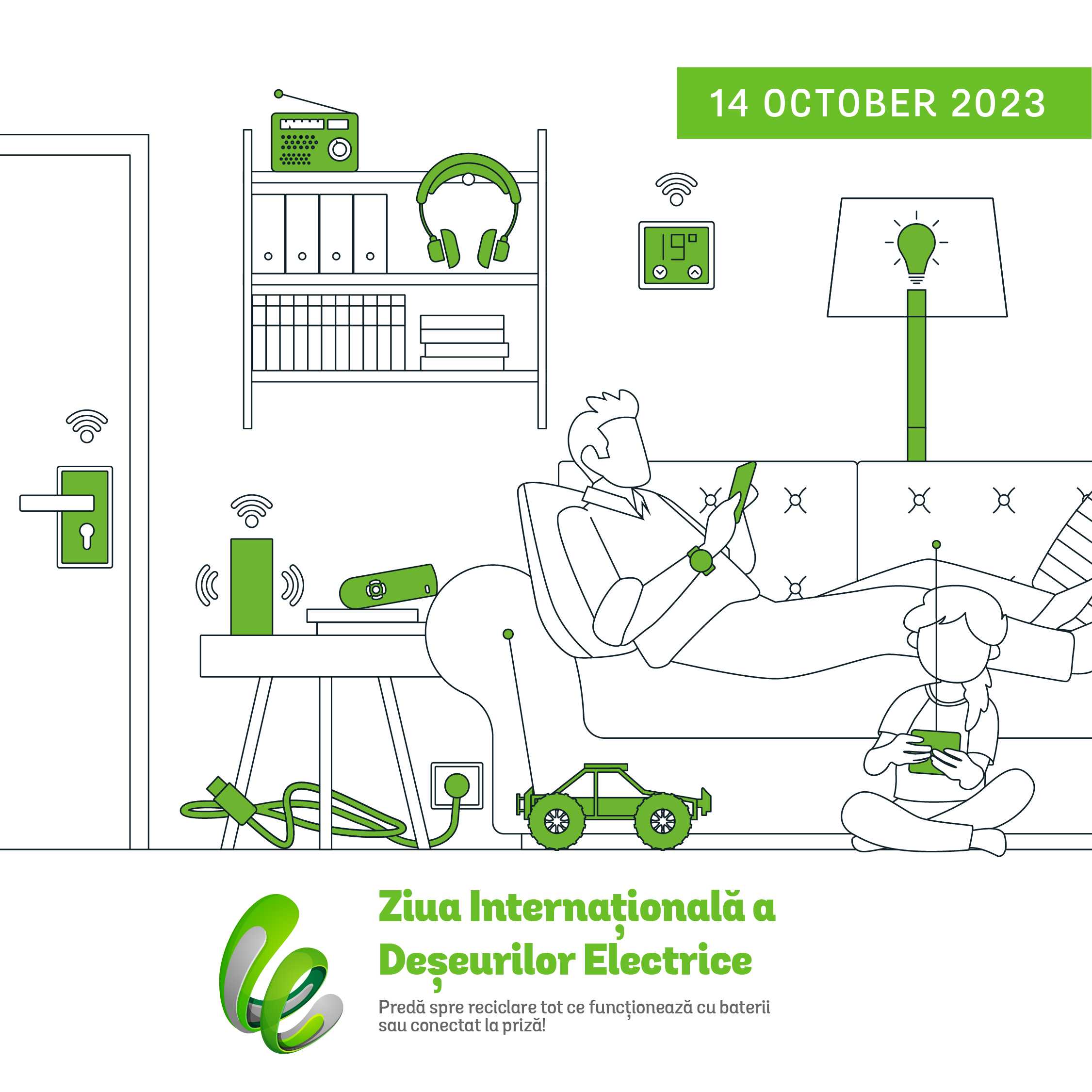 This year, the International Day of E-waste will be held under the motto "Recycle everything that runs on batteries or is plugged in!", drawing attention to invisible e-waste – items with electronic mechanisms that do not end up in the dedicated recycling stream because the generator does not consider them e-waste.
This year, the International Day of E-waste will be held under the motto "Recycle everything that runs on batteries or is plugged in!", drawing attention to invisible e-waste – items with electronic mechanisms that do not end up in the dedicated recycling stream because the generator does not consider them e-waste.
According to the United Nations, in 2023 they will be produced globally 8 kg of electronic waste per person. This means that in a year it is thrown away 61,3 million tons of e-waste - more than the weight of the Great Wall of China. Just 17,4% of these wastes containing a mixture of harmful substances and valuable materials shall be recorded as being collected, treated and recycled appropriately globally. The rest of 50,6 million tons will be stored at landfill, or incinerated or traded and treated illegally without complying with standards or simply kept in households. Even in Europe, which ranks first in the world in terms of e-waste recycling, only 54% of e-waste is officially reported as being collected and recycled, and the lack of awareness among the general public hinders the development of a circular economy for electronic equipment.
International E-Waste Day is an annual awareness campaign initiated by the WEEE Forum and its members and takes place every year on 14 October. Its aim is to highlight the growing problem of e-waste and promote responsible e-waste management. Any e-waste awareness raising activity is welcome to join the campaign: from social media, TV and radio campaigns to e-waste collections in cities or schools, events, conferences.
All organizations wishing to carry out activities on this occasion are invited to register here.
What is invisible e-waste?
Invisible e-waste refers to e-waste that goes unnoticed due to its nature or appearance, causing consumers to ignore its recycling potential in the dedicated stream.
As today's lifestyle is increasingly technology-oriented, a lot of products on the market have electrical or electronic components. This means that at the end of their life, when they can no longer be reused or repaired, they should be part of the electronics recycling stream. Some examples of this type of objects, often found in households, are: electric and electronic toys, electronic cigarettes, power tools, smoke detectors, portable medical devices, smart home gadgets, electric bicycles and scooters or simply cables.
Why is e-waste a problem?
According to a study developed in 2022 by the United Nations Institute for Training and Resources (UNITAR) and members of the WEEE Forum in 6 countries (United Kingdom, Italy, Portugal, Romania, Slovenia and the Netherlands), from those 74 electronic devices found in an average household, 13 are stored in the household (9 of them unused but functional and 4 broken). Small consumer electronic devices and accessories (such as headphones or remote controls – often not recognized as electronic devices) top the list of products stored in households. If these gadgets remain in drawers and cupboards, the materials they contain do not re-enter the production cycle.
According to the ECOTIC study carried out in 2022 "The habits of the Romanian population regarding small electrical equipment”, regarding the habits of disposing of electrical equipment waste, only 8,4% of households in Romania dispose of electrical waste correctly, the rest being handed over together with household waste, to informal scrap metal collectors or simply abandoned in the public space. This is caused by a still low level of awareness and especially the lack of collection infrastructure. Only 29% of citizens would know of an electrical waste collection point.
When electronic devices and components are disposed of improperly because they are not recognized as e-waste, they often end up in landfills or incinerators. Electronics contain various hazardous substances, such as lead, mercury, cadmium and flame retardants, which can leach into soil and water, polluting ecosystems and posing risks to human health.
Also, these devices CONTAINING valuable resources, including precious metals such as gold, silver and copper, as well as rare and strategic elements, called Critical Raw Materials, which are essential for the ecological transition and the production of new electronic devices. When e-waste is not properly recycled, these valuable materials are wasted.
"Last year 194 organizations from 72 countries on 6 continents registered as participants, and many other entities marked the day with activities, reports and online campaigns. This year we want the event to be even bigger as we see the growing importance of the e-waste issue. Not only because of its growing volumes. In Europe, with the war in Ukraine, there is a strong desire to increase the resilience of the EU economy in terms of Critical Raw Materials. They can be recovered from e-waste, but without all of us being responsible citizens and returning our electronic gadgets, this will not become a reality," says Pascal Leroy, CEO of the WEEE Forum; he continues: “Elsewhere in the world, we are seeing e-waste legislation emerging in more and more countries. Through initiatives like World E-Waste Day we want to give them the tools to raise awareness and overcome some of the obstacles we've already faced."
